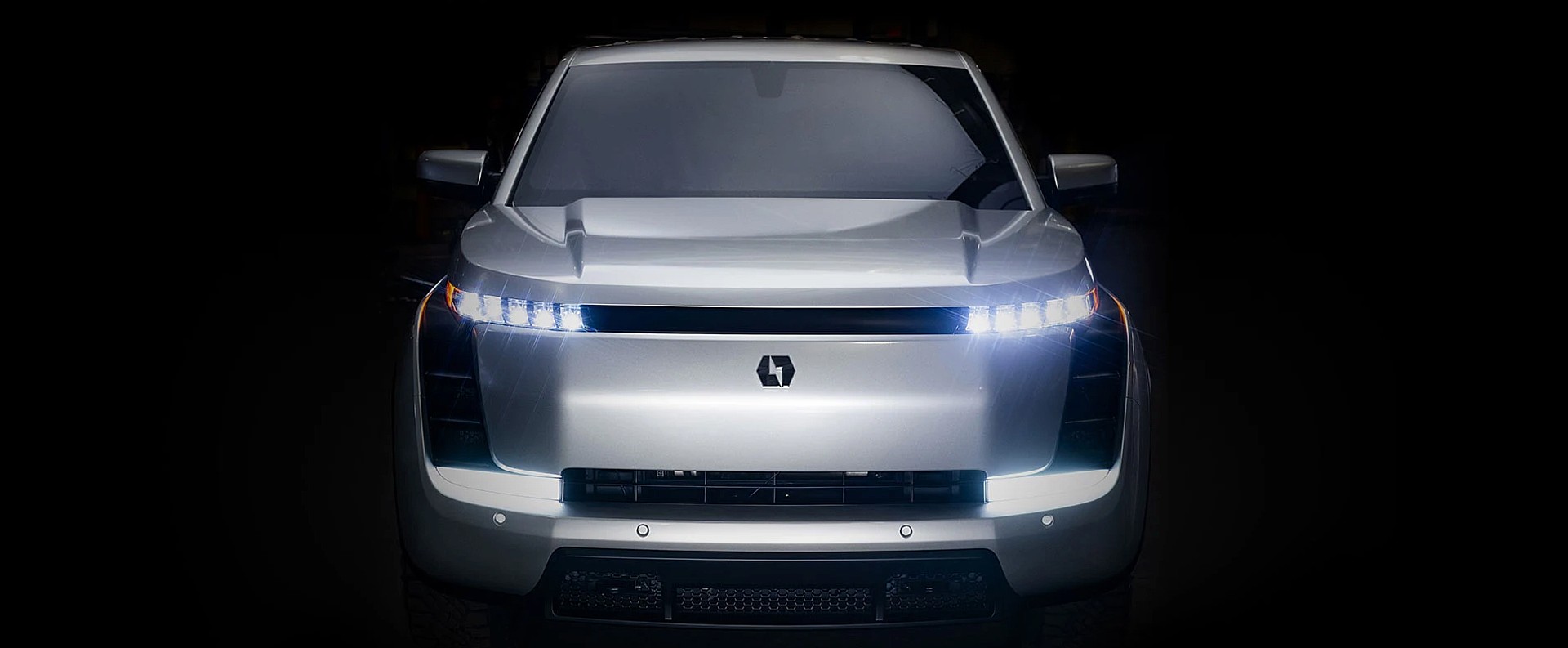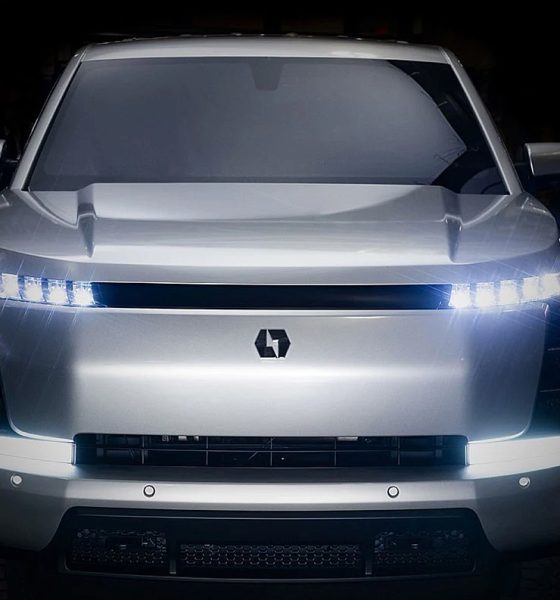

Investor's Corner
Lordstown Motors continues cash flow woes, sells Ohio plant to iPhone manufacturer Foxconn
Lordstown Motors, an electric vehicle startup based in Ohio, has announced that it has agreed in principle to work jointly on electric vehicle programs with iPhone manufacturer Hon Hai Technology Group, more commonly known as Foxconn.
Lordstown announced earlier this year that it was struggling with significant cash flow problems and that it would likely not sustain enough capital to keep its doors open through the end of June 2022. Lordstown said in a June 2021 filing with the SEC that its ability to stay open “is dependent on its ability to complete the development of its electric vehicles, obtain regulatory approval, begin commercial-scale production and launch the sale of such vehicles.” With cash issues, the automaker was likely forced to enter a joint partnership with a company that did not have financial worries. Foxconn appears to be Lordstown’s choice.
On Thursday, Lordstown confirmed the joint partnership with Foxconn:
Lordstown Motors Corp, a provider of electric light duty trucks focused on the commercial fleet market, today announced that the Company and Hon Hai Technology Group (“Foxconn”) have reached an agreement in principle to work jointly on electric vehicle programs in the Company’s assembly plant in Lordstown, Ohio. In connection with this announcement, the Company is today updating its production plan and financial outlook.”
Following the June 2021 filing that indicated Lordstown was set for closure within a year, the company made several changes in its boardroom. It relieved CEO Steven Burns and CFO Julio Rodriguez of their duties just days later. After appointing Becky Roof to Interim CFO and Angela Strand to Executive Chairwoman, the company then began to scramble to find financial support. However, Lordstown’s worries did not end there. Following a report from Hindenburg Research that claimed Lordstown was exaggerating its pre-order figures, especially after former CEO Burns stated that the company had accumulated 100,000 orders for its initial vehicle, the Endurance pickup.
The SEC decided to issue a post-effective amendment No. 2 to an S-1 registration statement, requesting more information and documentation that could prove Lordstown’s claimed pre-order counts. Lordstown obliged to the subpoenas. In late August, it announced that its new CEO would be Daniel Ninivaggi, a veteran of both Icahn Automotive Group LLC and Hertz Global Holdings, Inc. where he served as Director.
The new partnership with Foxconn helps Lordstown solidify its plans to manufacture the Endurance:
The Lordstown Motors team continues to move forward with its plan to build a limited number of vehicles for testing, validation, verification and regulatory approvals during the balance of 2021 and the first part of 2022. In light of the Foxconn agreement, the Company will evaluate the potential impact of the parties’ contract manufacturing relationship on commercial production, supply chain opportunities with Foxconn and the appropriate integration and timing of the parties’ operations teams and will provide an update on its production plan during our upcoming Q3 2021 earnings call currently slated for mid-November.”
It also updated its financial outlook, which consists of revised figures from the Q2 2021 Earnings Call:
- Capital expenditures – unchanged in total from $375 to $400 million, including changes in timing of tooling and equipment purchases and the inclusion of forecasted soft tooling expense purchases previously included in R&D expense.
- SG&A expenditures – $105 to $120 million, up from $95 to $105 million, primarily due to higher legal and professional fees.
- R&D expenditures – $320 to $340 million, up from $310 to $320 million, largely due to increased prototyping and pre-production expenses, reduced by the impact of moving forecasted soft tooling expense to capital expenditures as mentioned above.
- Cash balance on September 30, 2021 – $210 to $240 million, down from $225 to $275 million, which includes approximately $20 million of proceeds from the issuance of common stock under the Company’s Equity Purchase Agreement in August and September but excludes proceeds from Foxconn’s purchase of $50 million of the Company’s common stock as announced today.
Don’t hesitate to contact us with tips! Email us at tips@teslarati.com, or you can email me directly at joey@teslarati.com.

Investor's Corner
Tesla stock closes at all-time high on heels of Robotaxi progress

Tesla stock (NASDAQ: TSLA) closed at an all-time high on Tuesday, jumping over 3 percent during the day and finishing at $489.88.
The price beats the previous record close, which was $479.86.
Shares have had a crazy year, dipping more than 40 percent from the start of the year. The stock then started to recover once again around late April, when its price started to climb back up from the low $200 level.
This week, Tesla started to climb toward its highest levels ever, as it was revealed on Sunday that the company was testing driverless Robotaxis in Austin. The spike in value pushed the company’s valuation to $1.63 trillion.
Tesla Robotaxi goes driverless as Musk confirms Safety Monitor removal testing
It is the seventh-most valuable company on the market currently, trailing Nvidia, Apple, Alphabet (Google), Microsoft, Amazon, and Meta.
Shares closed up $14.57 today, up over 3 percent.
The stock has gone through a lot this year, as previously mentioned. Shares tumbled in Q1 due to CEO Elon Musk’s involvement with the Department of Government Efficiency (DOGE), which pulled his attention away from his companies and left a major overhang on their valuations.
However, things started to rebound halfway through the year, and as the government started to phase out the $7,500 tax credit, demand spiked as consumers tried to take advantage of it.
Q3 deliveries were the highest in company history, and Tesla responded to the loss of the tax credit with the launch of the Model 3 and Model Y Standard.
Additionally, analysts have announced high expectations this week for the company on Wall Street as Robotaxi continues to be the focus. With autonomy within Tesla’s sights, things are moving in the direction of Robotaxi being a major catalyst for growth on the Street in the coming year.
Elon Musk
Tesla needs to come through on this one Robotaxi metric, analyst says
“We think the key focus from here will be how fast Tesla can scale driverless operations (including if Tesla’s approach to software/hardware allows it to scale significantly faster than competitors, as the company has argued), and on profitability.”

Tesla needs to come through on this one Robotaxi metric, Mark Delaney of Goldman Sachs says.
Tesla is in the process of rolling out its Robotaxi platform to areas outside of Austin and the California Bay Area. It has plans to launch in five additional cities, including Houston, Dallas, Miami, Las Vegas, and Phoenix.
However, the company’s expansion is not what the focus needs to be, according to Delaney. It’s the speed of deployment.
The analyst said:
“We think the key focus from here will be how fast Tesla can scale driverless operations (including if Tesla’s approach to software/hardware allows it to scale significantly faster than competitors, as the company has argued), and on profitability.”
Profitability will come as the Robotaxi fleet expands. Making that money will be dependent on when Tesla can initiate rides in more areas, giving more customers access to the program.
There are some additional things that the company needs to make happen ahead of the major Robotaxi expansion, one of those things is launching driverless rides in Austin, the first city in which it launched the program.
This week, Tesla started testing driverless Robotaxi rides in Austin, as two different Model Y units were spotted with no occupants, a huge step in the company’s plans for the ride-sharing platform.
Tesla Robotaxi goes driverless as Musk confirms Safety Monitor removal testing
CEO Elon Musk has been hoping to remove Safety Monitors from Robotaxis in Austin for several months, first mentioning the plan to have them out by the end of 2025 in September. He confirmed on Sunday that Tesla had officially removed vehicle occupants and started testing truly unsupervised rides.
Although Safety Monitors in Austin have been sitting in the passenger’s seat, they have still had the ability to override things in case of an emergency. After all, the ultimate goal was safety and avoiding any accidents or injuries.
Goldman Sachs reiterated its ‘Neutral’ rating and its $400 price target. Delaney said, “Tesla is making progress with its autonomous technology,” and recent developments make it evident that this is true.
Investor's Corner
Tesla gets bold Robotaxi prediction from Wall Street firm
Last week, Andrew Percoco took over Tesla analysis for Morgan Stanley from Adam Jonas, who covered the stock for years. Percoco seems to be less optimistic and bullish on Tesla shares, while still being fair and balanced in his analysis.

Tesla (NASDAQ: TSLA) received a bold Robotaxi prediction from Morgan Stanley, which anticipates a dramatic increase in the size of the company’s autonomous ride-hailing suite in the coming years.
Last week, Andrew Percoco took over Tesla analysis for Morgan Stanley from Adam Jonas, who covered the stock for years. Percoco seems to be less optimistic and bullish on Tesla shares, while still being fair and balanced in his analysis.
Percoco dug into the Robotaxi fleet and its expansion in the coming years in his latest note, released on Tuesday. The firm expects Tesla to increase the Robotaxi fleet size to 1,000 vehicles in 2026. However, that’s small-scale compared to what they expect from Tesla in a decade.
Tesla expands Robotaxi app access once again, this time on a global scale
By 2035, Morgan Stanley believes there will be one million Robotaxis on the road across multiple cities, a major jump and a considerable fleet size. We assume this means the fleet of vehicles Tesla will operate internally, and not including passenger-owned vehicles that could be added through software updates.
He also listed three specific catalysts that investors should pay attention to, as these will represent the company being on track to achieve its Robotaxi dreams:
- Opening Robotaxi to the public without a Safety Monitor. Timing is unclear, but it appears that Tesla is getting closer by the day.
- Improvement in safety metrics without the Safety Monitor. Tesla’s ability to improve its safety metrics as it scales miles driven without the Safety Monitor is imperative as it looks to scale in new states and cities in 2026.
- Cybercab start of production, targeted for April 2026. Tesla’s Cybercab is a purpose-built vehicle (no steering wheel or pedals, only two seats) that is expected to be produced through its state-of-the-art unboxed manufacturing process, offering further cost reductions and thus accelerating adoption over time.
Robotaxi stands to be one of Tesla’s most significant revenue contributors, especially as the company plans to continue expanding its ride-hailing service across the world in the coming years.
Its current deployment strategy is controlled and conservative to avoid any drastic and potentially program-ruining incidents.
So far, the program, which is active in Austin and the California Bay Area, has been widely successful.








